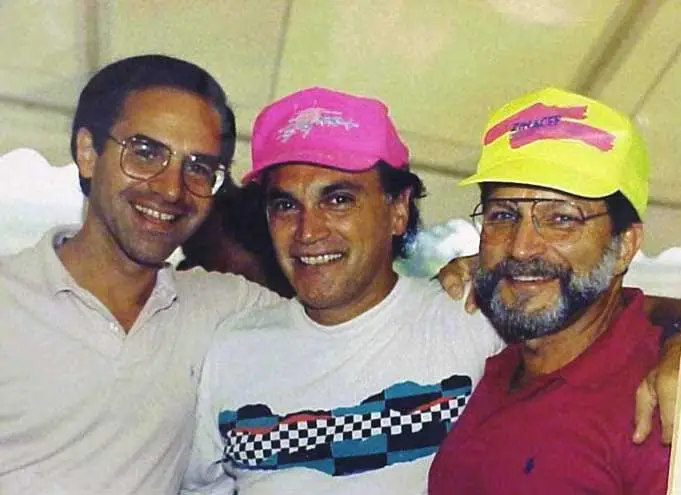The world has certainly changed a great deal in the past 40 years. Here’s a brief look back.
In 1977, Jimmy Carter became President of the United States, and on his second day in office, he pardoned all evaders of the Vietnam War draft.
The entertainment media was all aflutter in 1977 as the first Star Wars film, “Star Wars: Episode IV – A New Hope, premiered. The epic science-fiction adventure was written and directed by George Lucas and starred Mark Hamill, Carrie Fisher, Harrison Ford and Alec Guinness. The film was nominated for eleven Academy Awards, and it won six, including Best Visual Effects and Best Original Score.
In technology, The Commodore PET (Personal Electronic Transactor), the first all-in-one computer was introduced at the Computer Electronics Show. It came equipped with a monitor, keyboard and a cassette tape drive and was originally priced at $495. It had just four kilobytes of memory, but the company soon offered an upgraded model with eight kilobytes of RAM. Also, the first Apple II home computers (largely designed by Steve Wozniak) went on sale in the U.S., among the first successfully mass-produced microcomputers.
During this year in medicine, Dr. Raymond Damadian with Larry Minkoff and Michael Goldsmith performed the first magnetic resonance imaging (MRI) body scan of a human. Scientists identified a previously unknown bacterium as the cause of the Legionnaires’ disease. And in November of that year, two young orthopedic surgeons in Dallas – Dr. Stephen Hochschuler, Dr. Ralph Rashbaum– launched Texas Back Institute (TBI). Two years later, they were joined by a third partner, Dr. Richard Guyer.
The past 40 years have been remarkable in terms of advances in medical technology, and Texas Back Institute has become an internationally recognized contributor to this progress, as it relates to research and treatment of spinal injuries and disease.
It Started with a Couple of Air Force Buddies

From left to right: Guyer, Hochschuler, & Rashbaum
Dr. Hochschuler and Dr. Rashbaum were both stationed at the U.S. Air Force base in Wichita Falls, Texas, and in 1971 they began thinking about a different type of clinic that focused on spine treatment, surgery, research and education of future spine specialists.
“After we cross-trained in orthopedics and spine, we got together and started TBI in 1977,” Dr. Hochschuler said. “We quickly realized that in order to treat back pain patients and advance the science of back pain treatment, we really needed a multidisciplinary group.
“We wanted to bring partners who were otherwise considering a full-academic practice into our model. This would mean that they would devote time to not only clinical practice but also research, teaching, publications and new product development. The most fulfilling part of my career was to help bring this to fruition.
“Our goal was to be the most academic, private practice of spine in the world. This required us to marry the best of science, with the best of medicine with the best of business. In the past 40 years, we have exceeded far beyond our original goals.”
To watch the complete story from Dr. Hochschuler, click on the video below.
The Third Founding Partner
The other founding partner of Texas Back Institute, Dr. Richard Guyer, brought additional skills and passion to the vision of the young clinic.
“After starting with three doctors, we now have (number) spine specialists,” Dr. Guyer said. “We are a world-class organization that is recognized not only nationally but internationally. It is very gratifying for me to realize that we have contributed to the science of spine care for patients everywhere.
“Our multidisciplinary approach means that we incorporate not only the surgery but conservative care and other disciplines, such as neurosurgery. Plus, all of our specialists make presentations around the world about our research and best practices, and we are constantly publishing. This is who we are. We are not just a private practice. We do research, we train and we teach.
“We want Texas Back Institute to go on in perpetuity. We want to continue to grow and take on challenging research related to the spine. Most all, we want to affect better care for our patients. This is really the bottom line.”
To watch the complete interview with Dr. Guyer, click on the video below.
40 Years of Innovation at Texas Back Institute
With its remarkable history, it is no surprise that the best and the brightest of the nation’s medical schools and orthopedic residency programs and very successful practitioners actively pursue opportunities to work with this world-class group.
The medical breakthroughs that Texas Back Institute has been responsible for promulgating over the past 40 years are some of the most important innovations in spine treatment.
- Started an independent research arm to TBI which has now participated in numerous FDA studies and trials
- Brought in motion preserving disc replacement to the US in 2000
- Added behavioral health in 1990 to help patients secure better outcomes from surgery
- Introduced the first spine robot in 2011
- Introduced human motion lab (TBI Spine Biomechanics Lab) in 2014
- Incorporated the use of a weight-bearing MRI to see how load affects the patient’s spine
It is difficult to quantify the value that patients have received from the spine experts at TBI over the past 40 years. What is relief from years of excruciating chronic back pain worth? What does it mean for a young child with scoliosis, a painful and dangerous curvature of the spine, to have his or her life changed forever? When spinal osteoporosis cripples an otherwise active senior and an artificial disc – pioneered by researchers at TBI – allows them to walk again, what is that worth?
The answer is simple. It’s priceless.
If you are experiencing chronic back pain or a back injury, you can rely on our 40 years of experience. Contact us for an appointment with one of the experts at Texas Back Institute.



I’ve had significant back issues L3 – four have been fused in 2018 and then in 2021 above and below that fusion required a laminectomy. Since that time I’ve had various levels but significant pain, sciatica… I have a cute scoliosis as well, I’ve stayed in good shape, but would love to find some long-term relief to return some activities and be able to travel and teach globally as that’s a big part of my job.
Thank you for reaching out. If you would like to schedule an evaluation with one of our providers please feel free to call us at 972-608-5100.